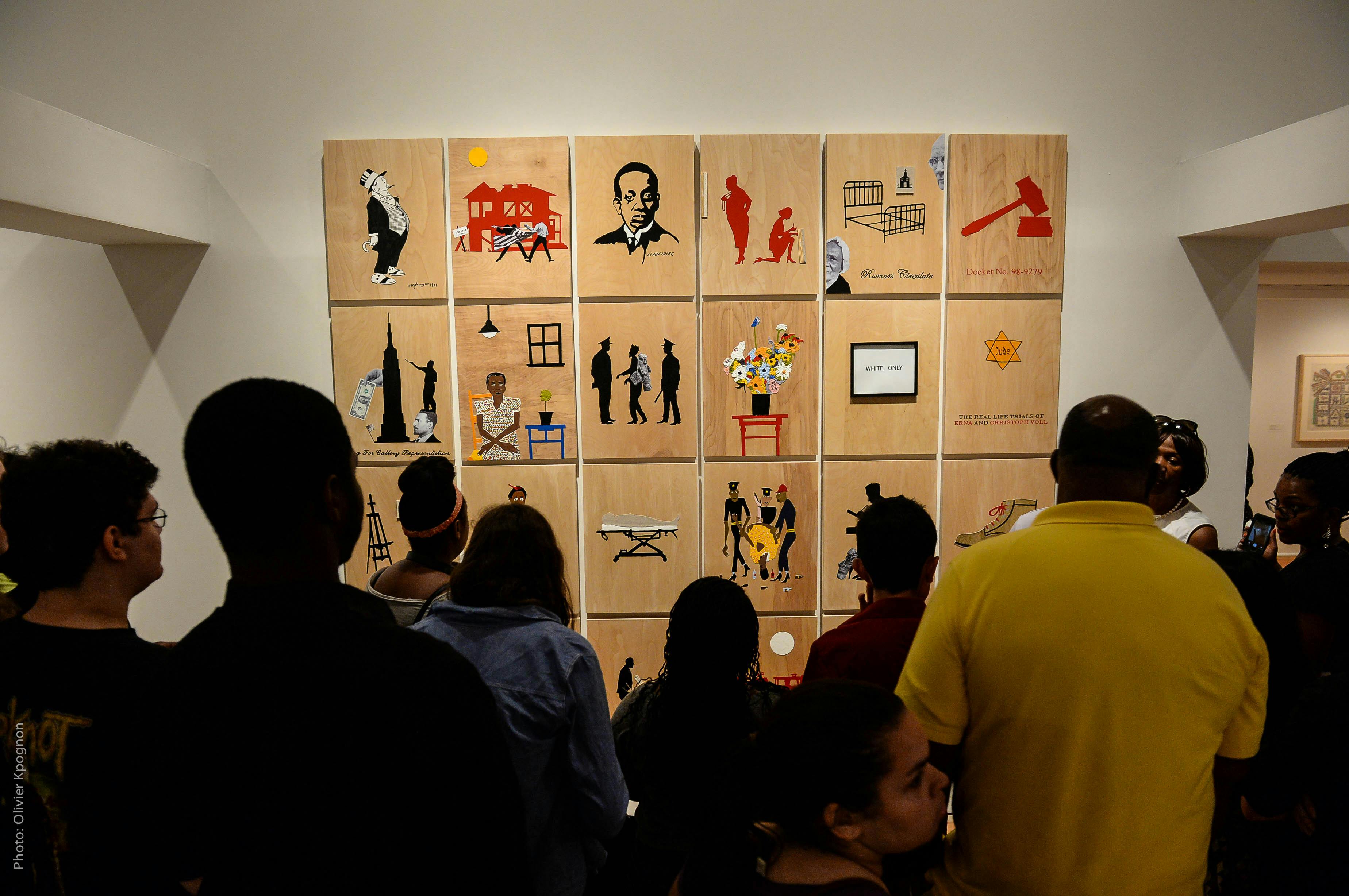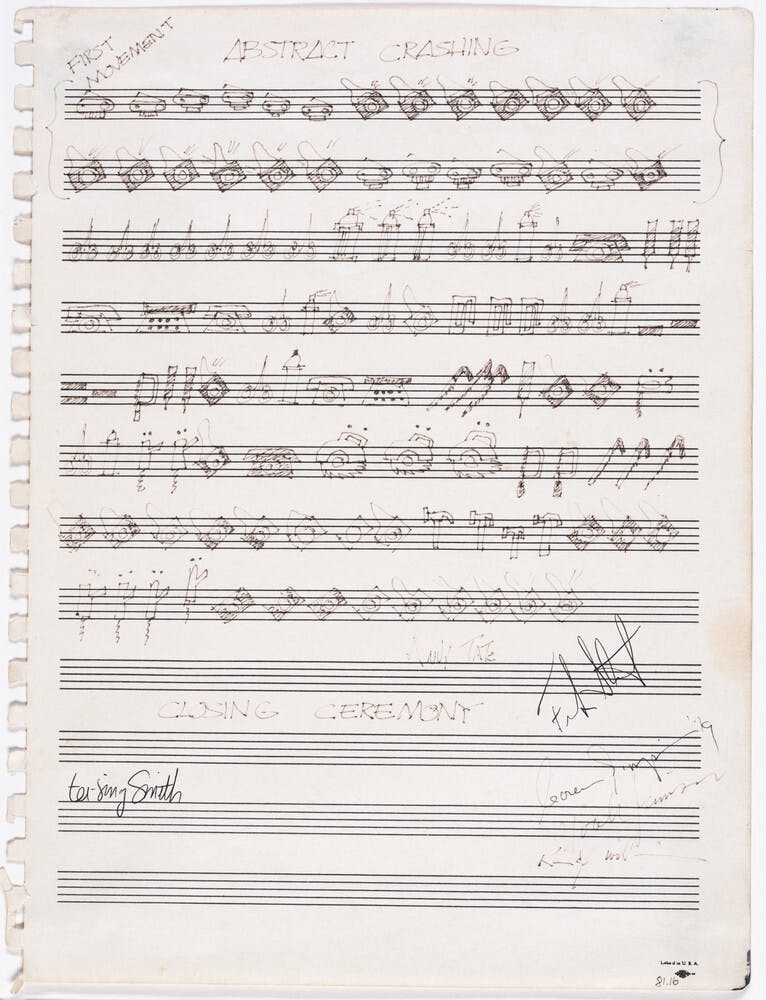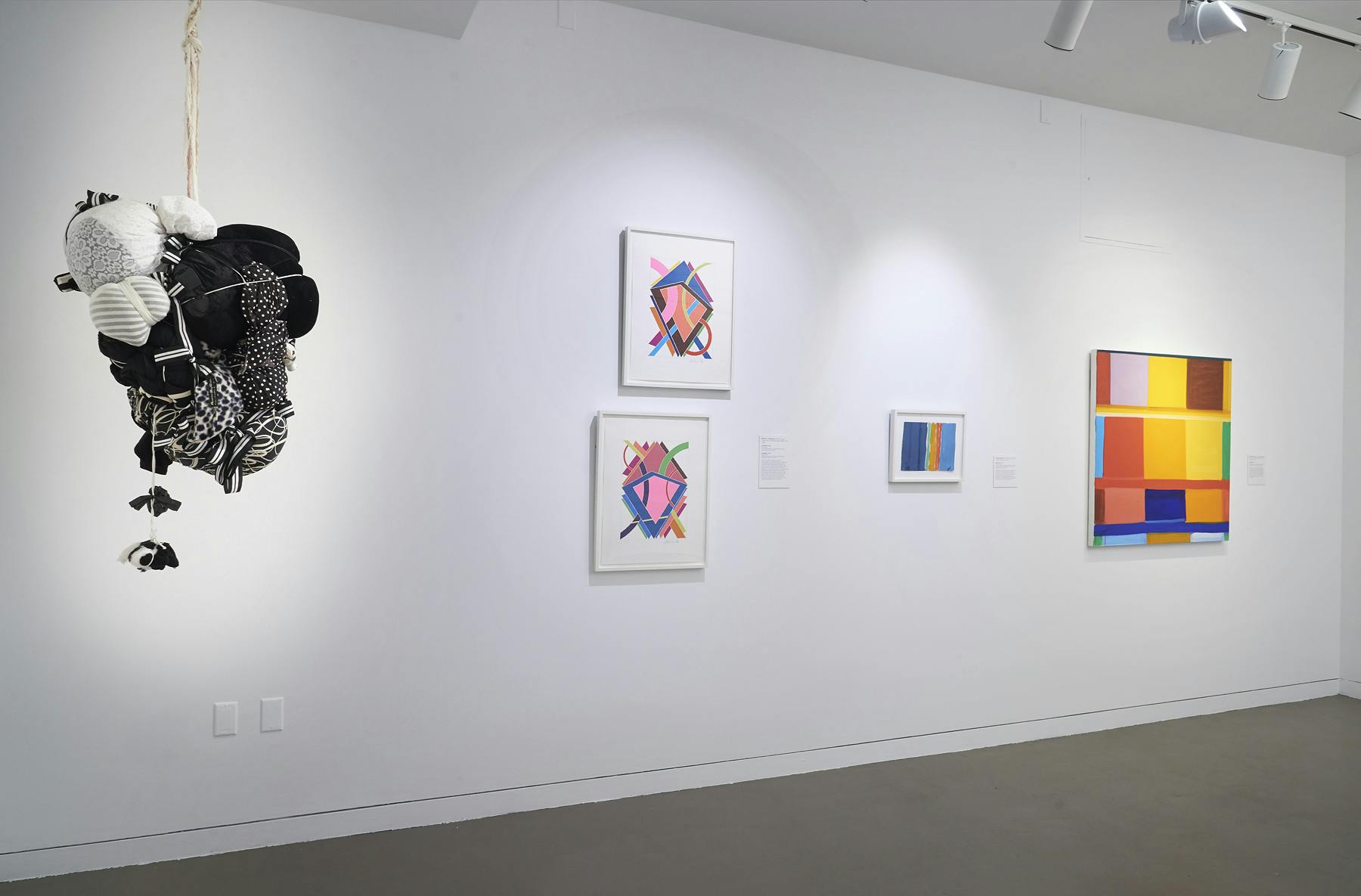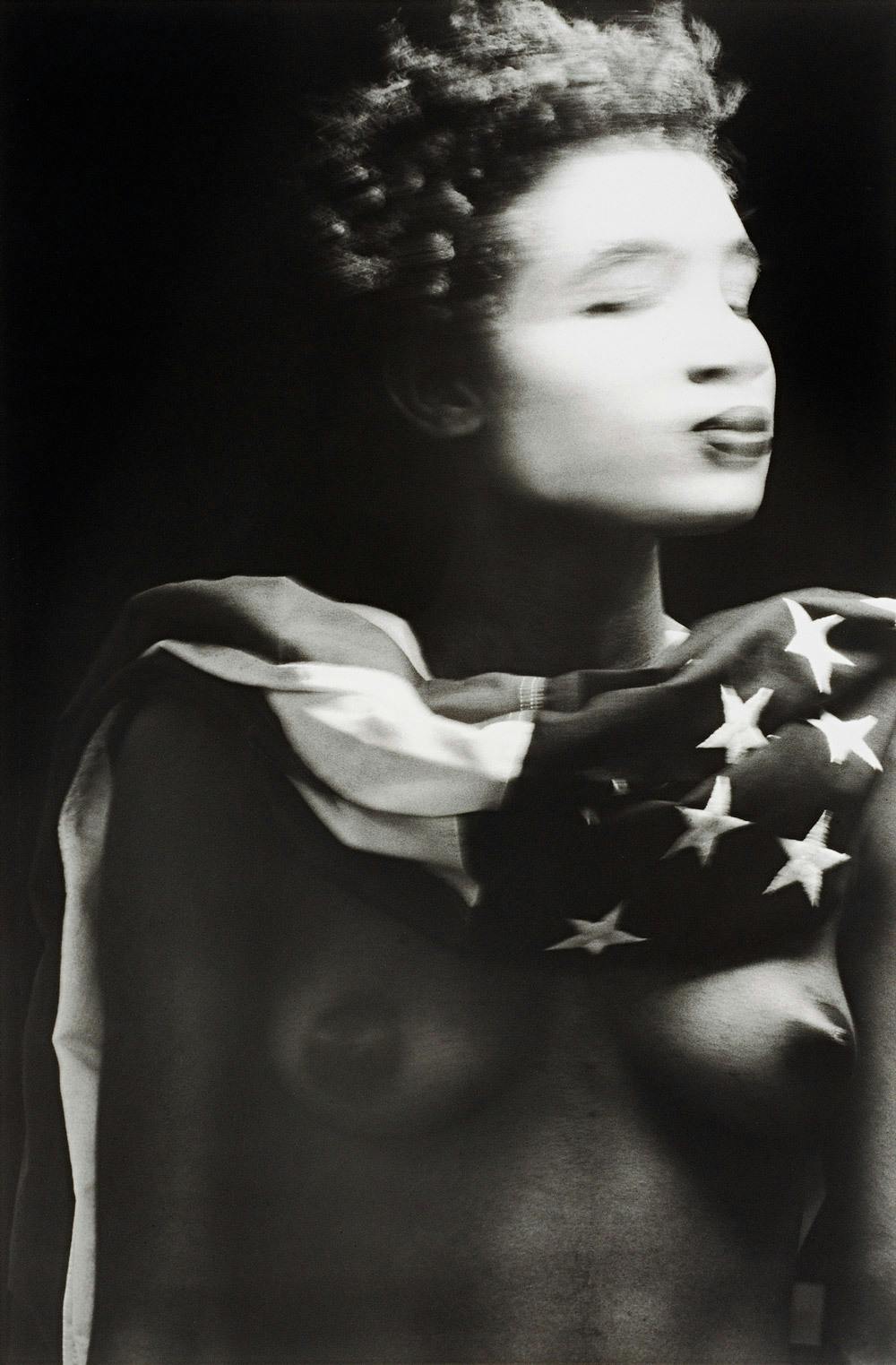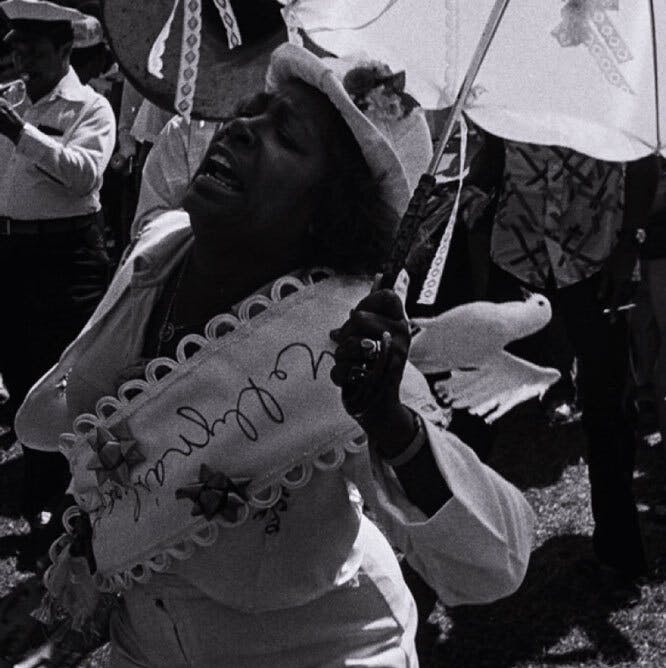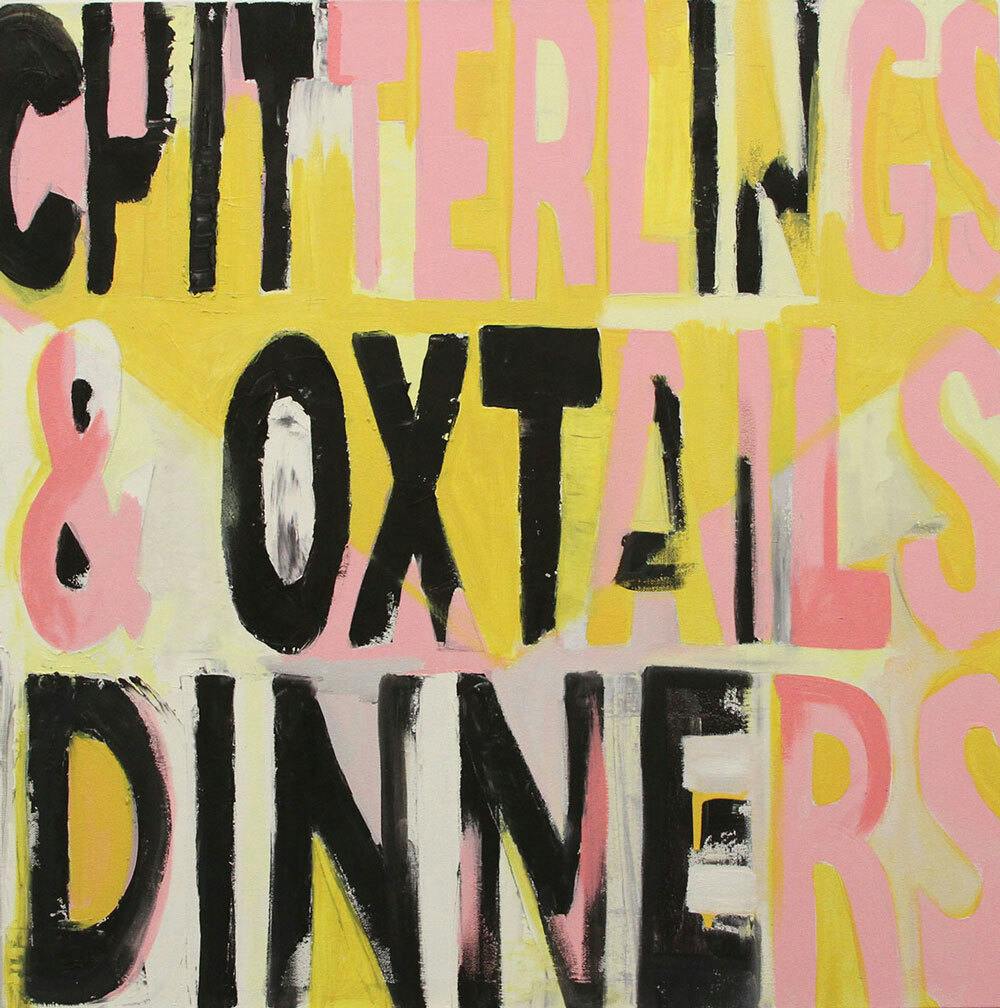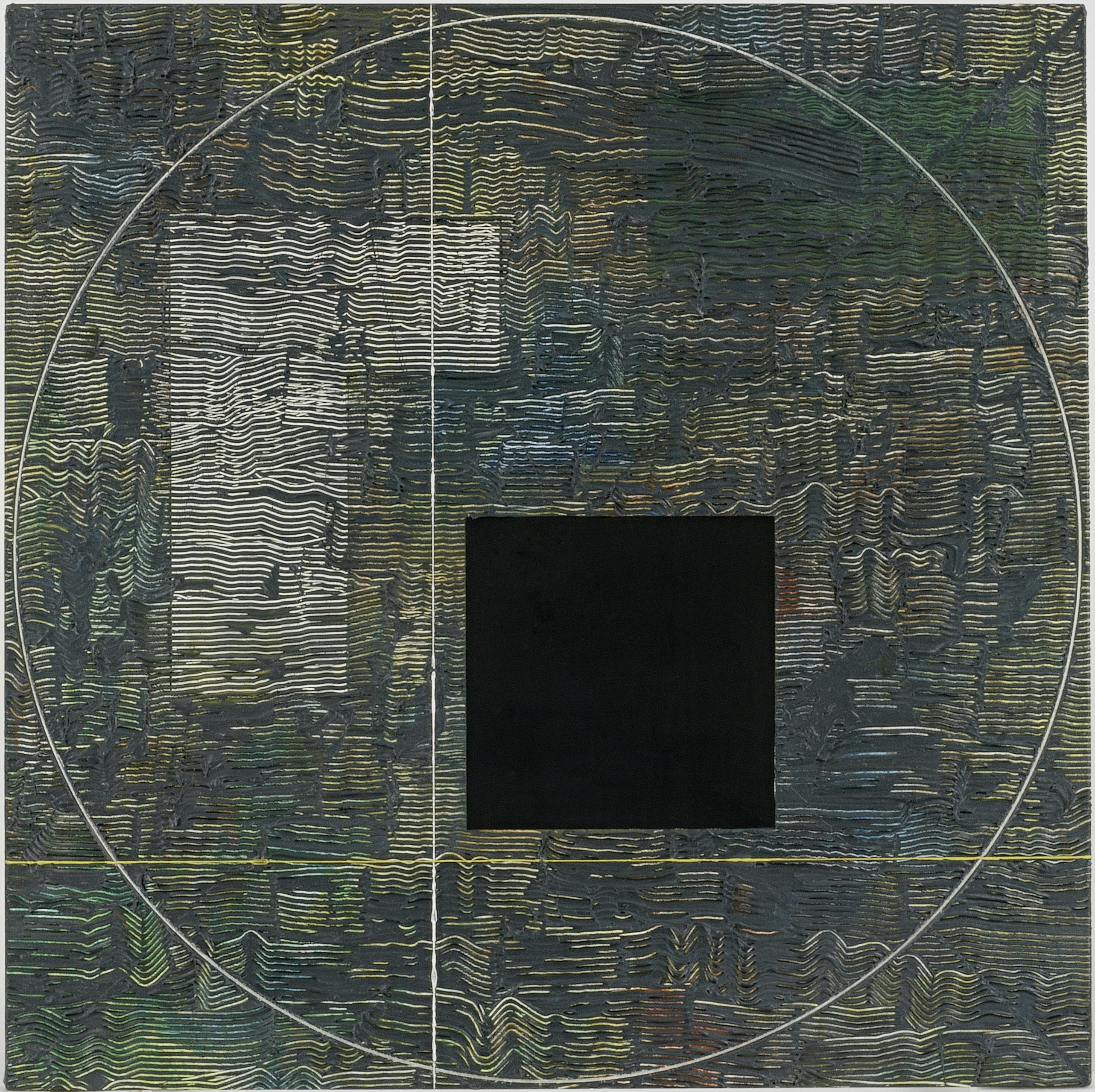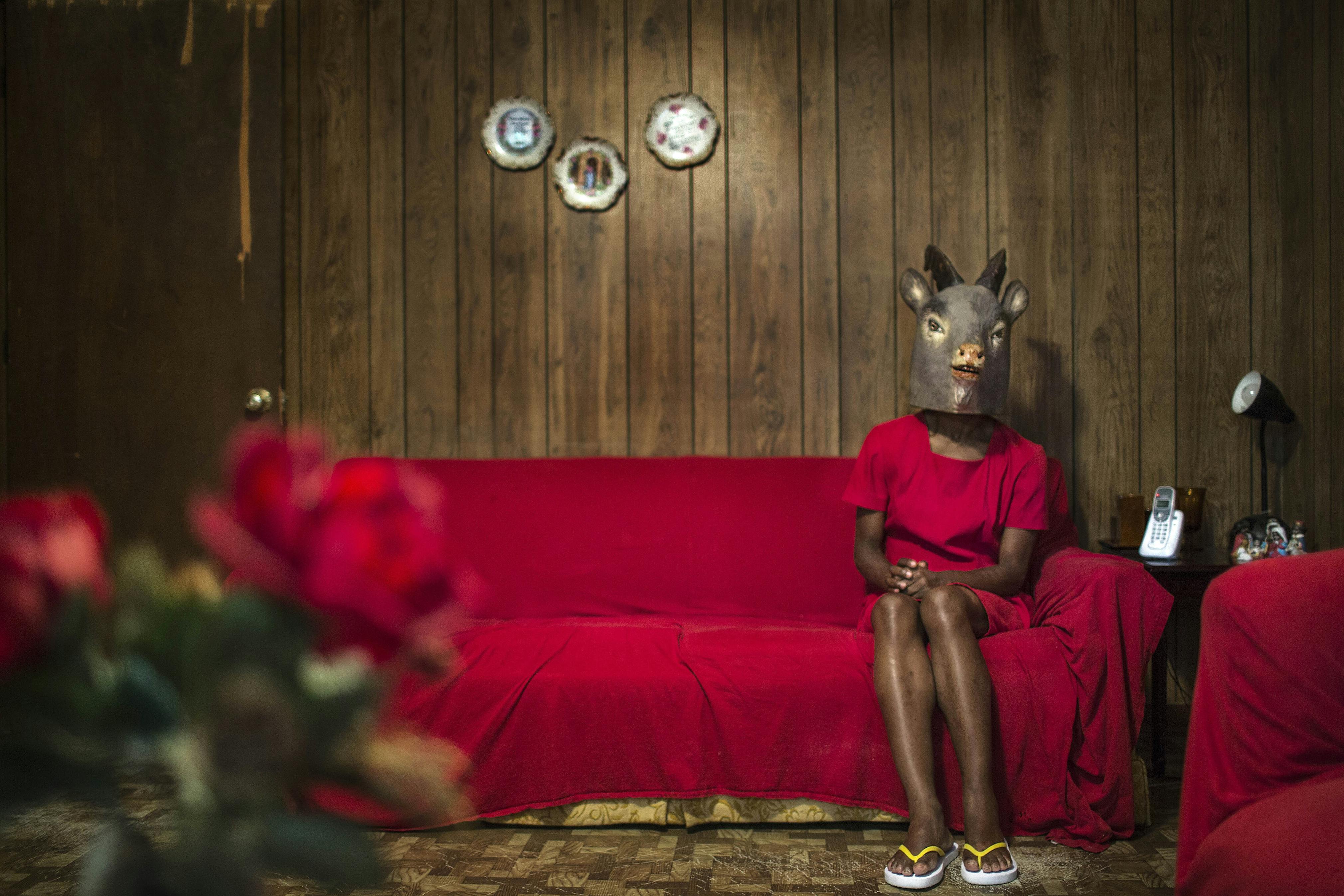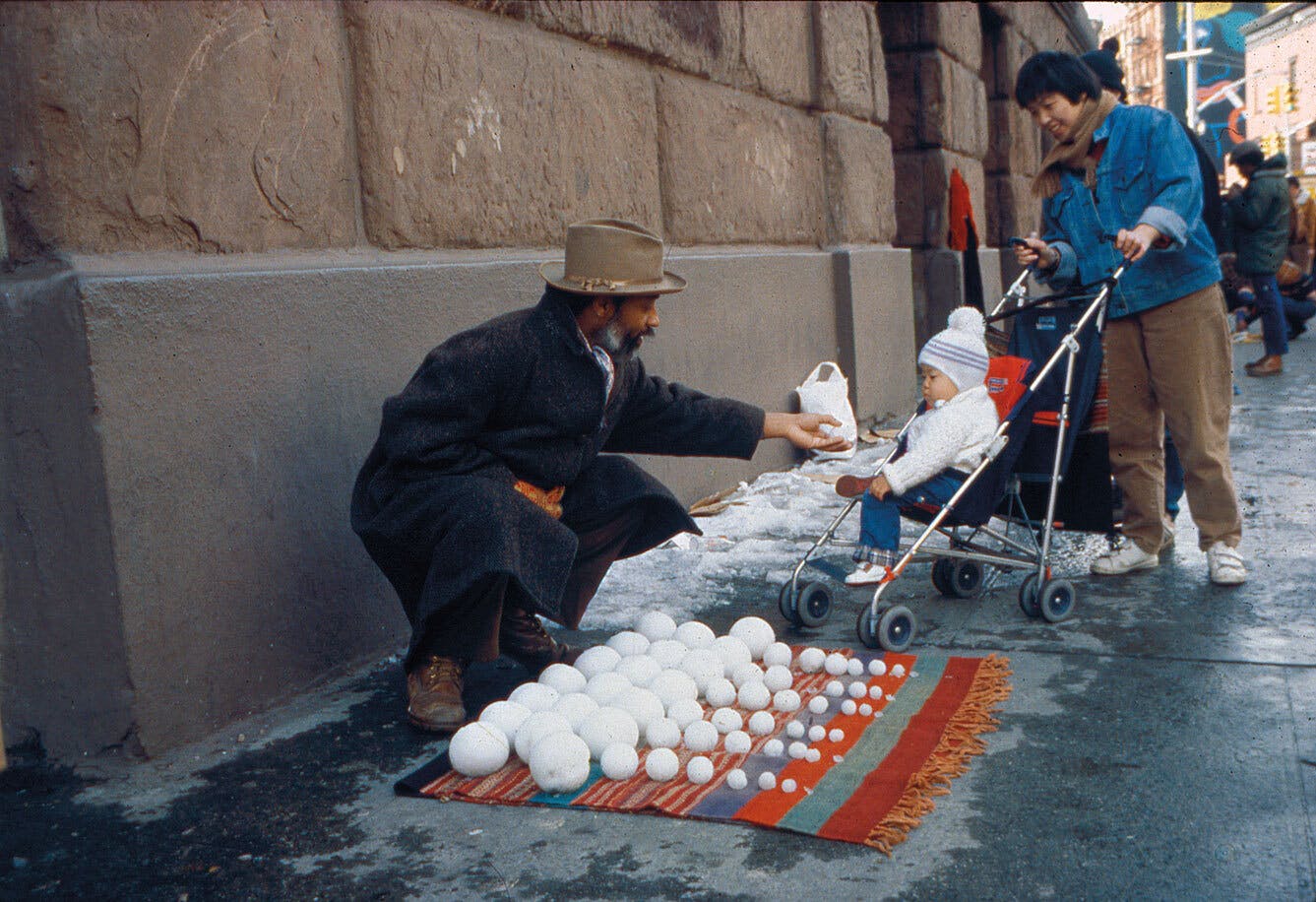David Hammons
(b. 1943)1980–81 Artist in ResidenceDavid Hammons traces the politicization and commodification of the Black body and identity through an array of multimedia and performance works.
Biography
In his incisive and wide-ranging practice, David Hammons transforms and translates charged symbols to comment on the realities of Black life in the United States.
He grew up the youngest of ten children in Springfield, Illinois. In 1963, he moved to Los Angeles, where he worked a variety of jobs and took classes in commercial art and design. While studying advertising at Los Angeles Trade Technical City College, he began taking night classes at Otis Art Institute. Charles White, a social realist artist, let Hammons take his classes free of charge. Despite pursuing a different approach to art making than the figurative one White employed, Hammons maintained a similarly socially committed practice. In 1974, he moved to New York, where he participated in exhibitions at Just Above Midtown and completed a residency at the Studio Museum in Harlem (1980–81).
Hammons’s practice includes drawings, performances, prints, paintings, video, and found-object sculptures. His work is steeped in strategies of Conceptualism, with particular influence from Dadaism and Arte Povera. He takes a diverse approach to process, including using his own body as a stamp with which to make prints, and employs coded materials such as the United States flag, cowrie shells, chicken bones, hair, and basketballs. In his works, the title and object taken together offer a verbal or visual pun, utilizing humor as a means of sharply confronting and interrogating cultural stereotypes, state-sanctioned violence, and art-world ecosystems. Throughout his career, Hammons has challenged how the meaning of art—particularly art by artists of African descent—is created, concretized, and read.
Hammons studied at Los Angeles Trade Technical City College, Chouinard Art Institute, and the Otis Art Institute. He received a Guggenheim Fellowship for Creative Arts (1984); Prix de Rome (1990); and MacArthur Fellowship (1991). The Studio Museum has presented his work in numerous exhibitions, including Eleven from California (1972); Tradition and Conflict: Images of a Turbulent Decade 1963–1973 (1985); and When the Stars Begin to Fall: Imagination and the American South (2014).
Exhibitions and Events
David Hammons
(b. 1943)1980–81 Artist in ResidenceDavid Hammons traces the politicization and commodification of the Black body and identity through an array of multimedia and performance works.
Too Obvious, 1996
Biography
In his incisive and wide-ranging practice, David Hammons transforms and translates charged symbols to comment on the realities of Black life in the United States.
He grew up the youngest of ten children in Springfield, Illinois. In 1963, he moved to Los Angeles, where he worked a variety of jobs and took classes in commercial art and design. While studying advertising at Los Angeles Trade Technical City College, he began taking night classes at Otis Art Institute. Charles White, a social realist artist, let Hammons take his classes free of charge. Despite pursuing a different approach to art making than the figurative one White employed, Hammons maintained a similarly socially committed practice. In 1974, he moved to New York, where he participated in exhibitions at Just Above Midtown and completed a residency at the Studio Museum in Harlem (1980–81).
Hammons’s practice includes drawings, performances, prints, paintings, video, and found-object sculptures. His work is steeped in strategies of Conceptualism, with particular influence from Dadaism and Arte Povera. He takes a diverse approach to process, including using his own body as a stamp with which to make prints, and employs coded materials such as the United States flag, cowrie shells, chicken bones, hair, and basketballs. In his works, the title and object taken together offer a verbal or visual pun, utilizing humor as a means of sharply confronting and interrogating cultural stereotypes, state-sanctioned violence, and art-world ecosystems. Throughout his career, Hammons has challenged how the meaning of art—particularly art by artists of African descent—is created, concretized, and read.
Hammons studied at Los Angeles Trade Technical City College, Chouinard Art Institute, and the Otis Art Institute. He received a Guggenheim Fellowship for Creative Arts (1984); Prix de Rome (1990); and MacArthur Fellowship (1991). The Studio Museum has presented his work in numerous exhibitions, including Eleven from California (1972); Tradition and Conflict: Images of a Turbulent Decade 1963–1973 (1985); and When the Stars Begin to Fall: Imagination and the American South (2014).
Exhibitions and Events
